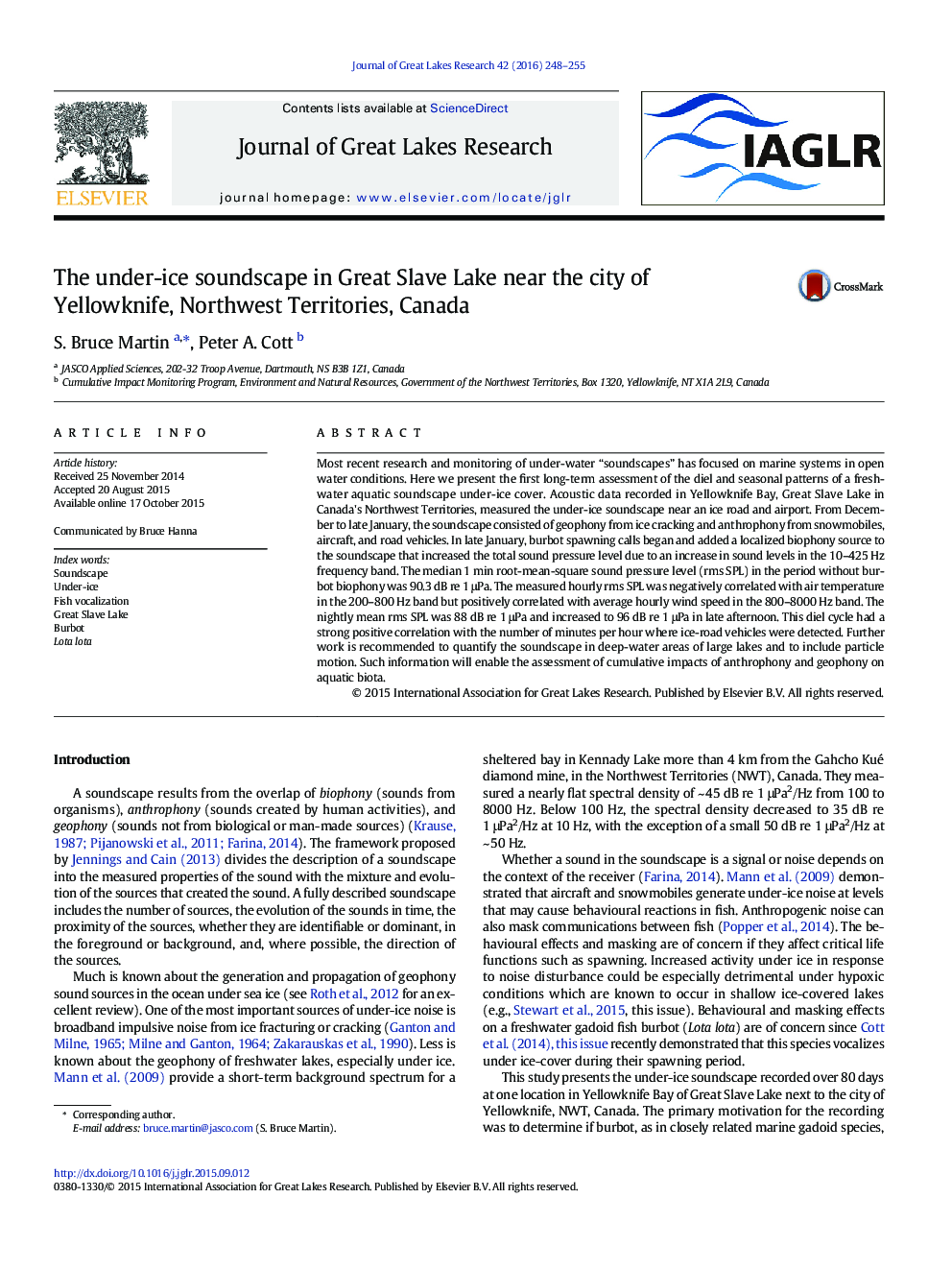| Article ID | Journal | Published Year | Pages | File Type |
|---|---|---|---|---|
| 6304720 | Journal of Great Lakes Research | 2016 | 8 Pages |
Abstract
Most recent research and monitoring of under-water “soundscapes” has focused on marine systems in open water conditions. Here we present the first long-term assessment of the diel and seasonal patterns of a fresh-water aquatic soundscape under-ice cover. Acoustic data recorded in Yellowknife Bay, Great Slave Lake in Canada's Northwest Territories, measured the under-ice soundscape near an ice road and airport. From December to late January, the soundscape consisted of geophony from ice cracking and anthrophony from snowmobiles, aircraft, and road vehicles. In late January, burbot spawning calls began and added a localized biophony source to the soundscape that increased the total sound pressure level due to an increase in sound levels in the 10-425 Hz frequency band. The median 1 min root-mean-square sound pressure level (rms SPL) in the period without burbot biophony was 90.3 dB re 1 μPa. The measured hourly rms SPL was negatively correlated with air temperature in the 200-800 Hz band but positively correlated with average hourly wind speed in the 800-8000 Hz band. The nightly mean rms SPL was 88 dB re 1 μPa and increased to 96 dB re 1 μPa in late afternoon. This diel cycle had a strong positive correlation with the number of minutes per hour where ice-road vehicles were detected. Further work is recommended to quantify the soundscape in deep-water areas of large lakes and to include particle motion. Such information will enable the assessment of cumulative impacts of anthrophony and geophony on aquatic biota.
Related Topics
Physical Sciences and Engineering
Earth and Planetary Sciences
Earth and Planetary Sciences (General)
Authors
S. Bruce Martin, Peter A. Cott,
